Mitosis Diagram
The mitosis diagram in the cell reproduction worksheet shows the phases of mitosis.
Free Download Below
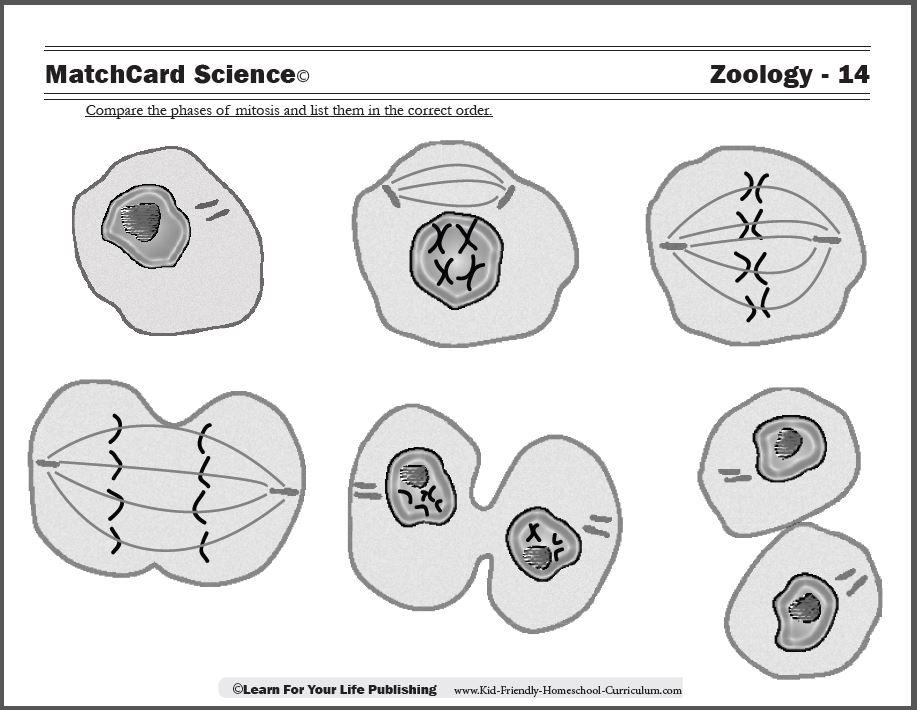

MatchCard Science Cell Reproduction Worksheet
Objective: Compare the phases of mitosis and list them in correct order.MatchCard: Download below.
MatchCard Information Pieces define and describe the phases of mitosis. Ideas for projects are listed on the instructor's page and below.
Print the Mitosis MatchCard
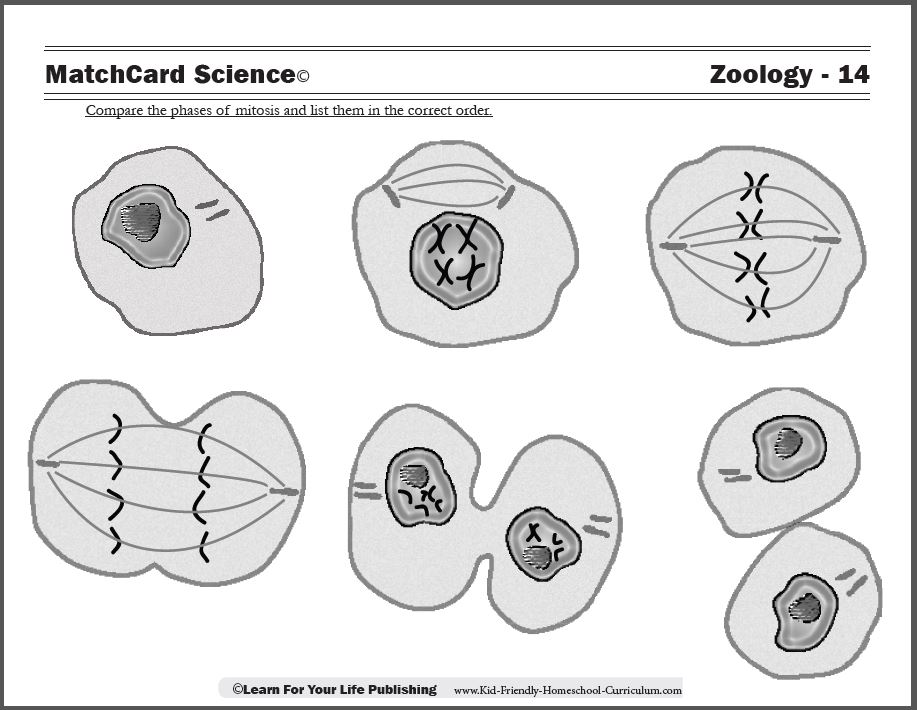

Click image to go to download.
This is MatchCard #14 of the Zoology Unit Study. Find more information on MatchCard Science below.
Phases of Mitosis
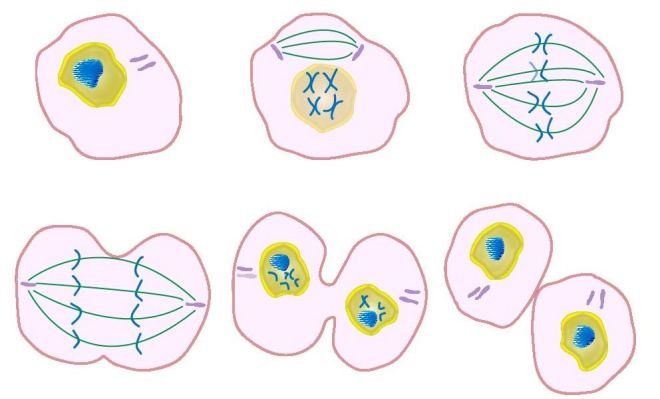
- Cytoplasm: Pink
- Nucleus: Yellow
- Chromosomes: Blue
- Centrioles: Purple
- Spindles: Green
1st Stage of Mitosis: Interphase
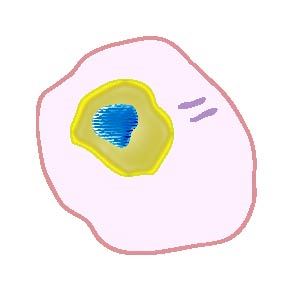
2nd Stage of Mitosis: Prophase
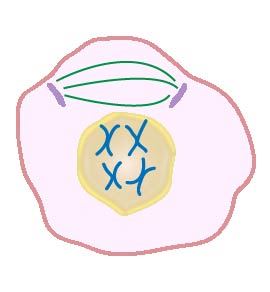
3rd Stage of Mitosis: Metaphase
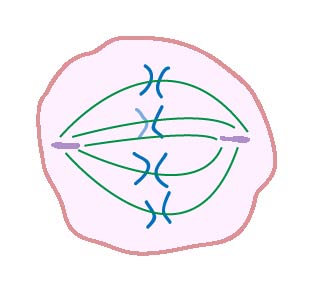
4th Stage of Mitosis: Anaphase
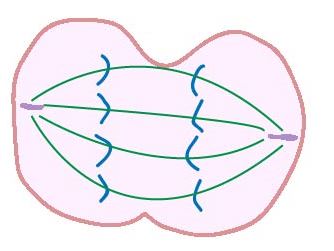
5th Stage of Mitosis: Telophase
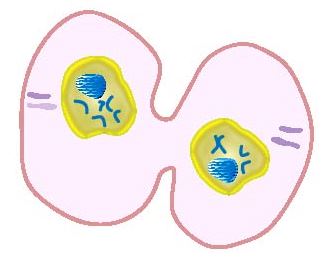
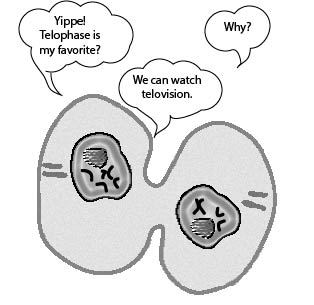
Back to Interphase
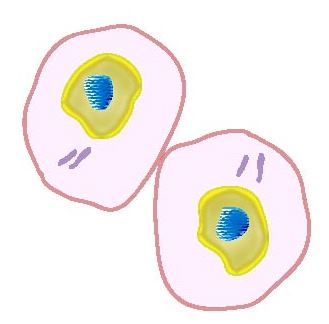
Mitosis Learning Activities
Use the Mitosis Worksheet
Print one copy of the Mitosis Matchcard from the link above for each student and one copy of the teacher's page for yourself.Students can match the Information Pieces to the correct phase of mitosis on the page.
Mnemonic: Please Make A Twin
The menmonic "Please Make A Twin" makes it easier to remember the active phases of cell division.- Please: Pairs of chromosomes aPPear in Prophase
- Make: chromomes Meet in the center during Metaphase
- A: chromomes are pulled Apart during Anaphase
- T: Two cells with their own nucleus appear in Telophase
Mitosis Flip Book
Print an additional student copy of the worksheet for each student. They can color the diagram with colored pencils with the colors of their choice. Keep it consistent for each cell part in each diagram.As an alternative, they can draw their own diagrams on index cards.
Staple them together and make a mitosis flipbook.
Mitosis Memory Game
Cut the worksheet into individual flashcards and write the phases on index cards. Lay them out face downward and play a memory game.As an alternative, the cards can be mixed up and students put them in the correct order as fast as possible. This can be a collaborative or competitive exercise if you have more than one student.
Mitosis Quiz
All of the MatchCards can be used as a quiz. Simply give them a new copy of the student page without the information pieces. They need to identify and describe each stage.Another way to emphasize what is happening during each phase is to allow the student to create a mitosis quiz for YOU to complete. They need to identify at least one event occuring in each stage and make it as a matching quiz.
Mitosis vs Meiosis
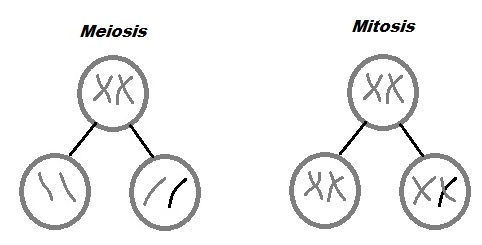
MEIOSIS is a special process that only sexual cells undergo. In animals the process of Meiosis produces sperm and egg cells. Each cell has only half the chromosomes of a regular cell. That way the new organism gets the correct number of genes: half from each parent.
- Mitosis: an individual cell within an orgamism produces new cells
- Meiosis: the organism produces a new offspring
MatchCard Science
How To Use MatchCards

Download the FREE MatchCard Science Instructor's Guide and see how MatchCards can make building their science knowledge base fun.
12 Science Unit Studies

Chemistry is only one of twelve complete unit studies for kids in 3rd to 8th grade.
Comprehensive objectives, hands-on projects, suggested science fair experiments, and the fun game-like MatchCards keep them interested in learning science. See all twelve MatchCard Science Unit Studies.
About Our Site
Hands-On Learning














